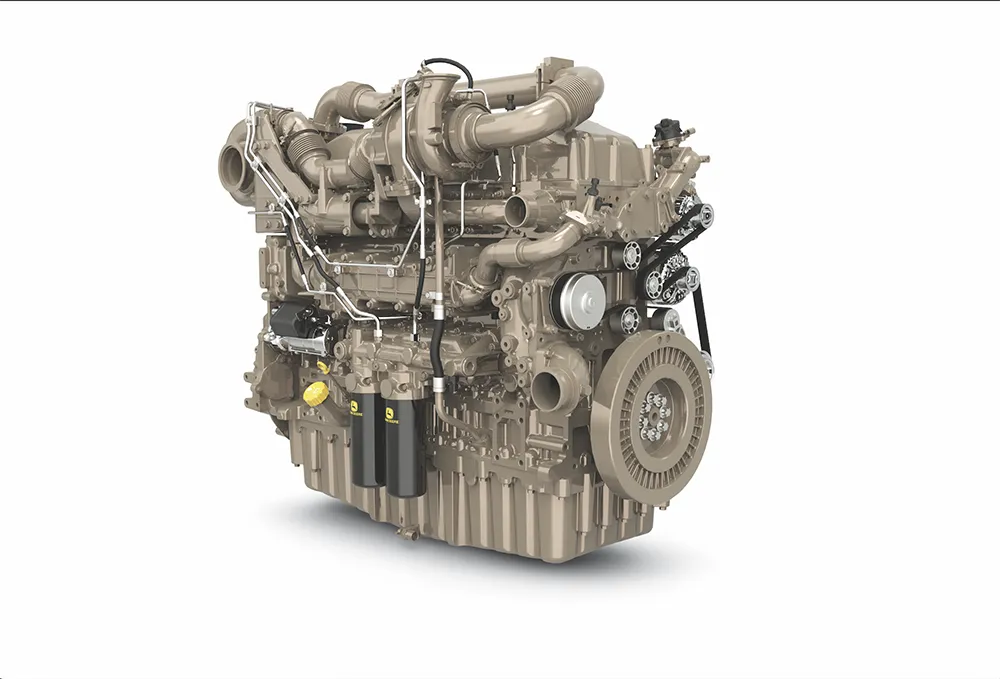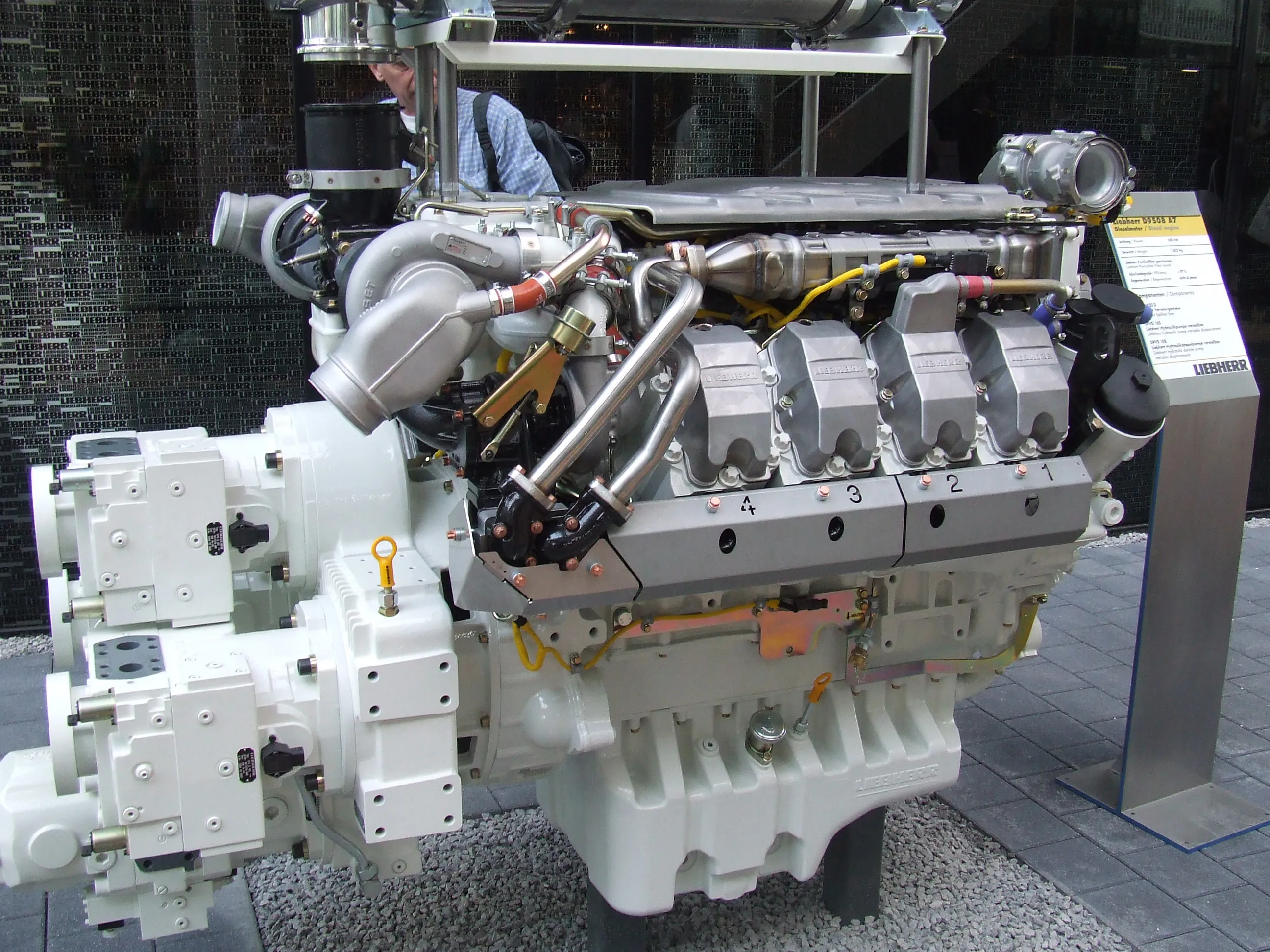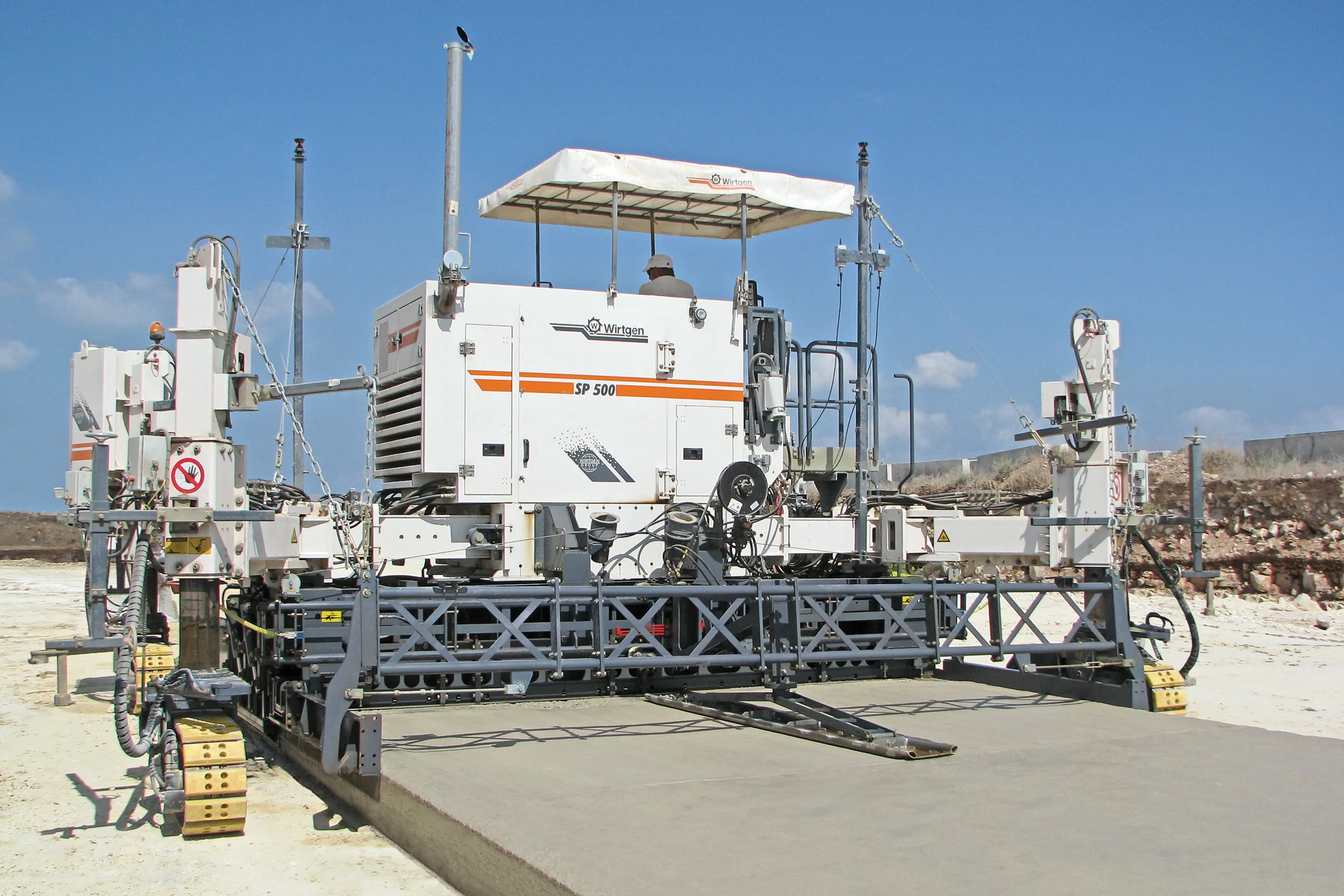
The most cutting-edge solutions are often cultivated for the most long-standing trades, such as construction and quarrying. Advances in engine technology have delivered new and more efficient power units that deliver higher power densities, while using less fuel and producing lower levels of emissions.
The recently introduced John Deere JD14 diesel engine provides OEMs with more power/litre than previous 13.5L configurations. John Deere designed this engine specifically to meet customer needs of increased power and torque. With outputs up to 510kW, it has 14% higher power and 11% increased peak torque, making it a reliable and durable power solution.
The John Deere JD14 engines are proven and have been working more than 47,000 hours at high load in a variety of applications. Many of the operating challenges were even more extreme than typically confronted in the field; repeating high to low loads to confirm thermal durability, block loading to show strength, and ultra-low idling to demonstrate oil pressure capabilities.
Continuing with an analysis-led process first used with the JD14 engine, the firm’s recently introduced JD18 is now the largest engine in the range, offering rated power up to 676kW.
This engine is the second unit from John Deere to be engineered to address the latest customer and market needs for industries such as construction. The JD18 engine has been designed for extreme durability and is ideal for heavy-duty applications around the world.
As the JD18 engine builds on advancements made during the JD14 development programme, there are multiple technological and design similarities. These include John Deere model-based controls, a rear gear train and streamlined service and repair capabilities.
The John Deere model-based controls offer advanced prognostics capabilities and reduce the overall number of sensors needed, which improves transient response. Switching the location of the gear train from the front to the rear of the engine reduces noise and torsional vibration. In addition, its streamlined design factored in the top 20 service and repair jobs normally completed on an engine as part of the development process, resulting in reduced repair. Both engines also feature a three-piece integrated harness with a protective channel, further boosting overall reliability.
To meet customer needs for fewer and shorter planned maintenance intervals, John Deere utilised hydraulic lash adjusters (HLAs) in the JD18 engine design. The HLAs are hydraulically operated and self-adjusting, eliminating the need to manually reset the valve lash, a lengthy service process. The JD18 also features a three-piece integrated harness with a protective channel for additional reliability.
In addition, locating the gear train in the rear of the engine improves durability while boosting operational flexibility, as it enables more gear drive auxiliary power take-off capabilities.
The firm says that it continues its commitment to helping OEMs implement electrified system architectures. The company offers a range of engine, drivetrain, and electronic solutions with hybrid architectures that have been proven in the field with more than 2 million operating hours.
Implementing alternative power systems such as drivetrain and electric solutions in off-highway equipment can depend on being able to optimise an overall power solution. These balance mechanical, hydraulic and electric power systems, and cost. John Deere offers a broad range of expertise in mechanical and electronic solutions, which contribute toward robust, reliable alternative power architectures.
John Deere recently introduced its Smart Industrial strategy, which is designed to help customers become more profitable and sustainable. As a part of this strategy, the firm uses the Internet of Things (IoT) and machine performance data to develop new solutions through John Deere Connected Support. An increased focus on implementing connectivity solutions has empowered a shift from reacting to problems after they occur in the field to a proactive approach of anticipating and preventing machine downtime, increasing productivity by boosting uptime.
Because the John Deere solution includes power generation and traction drive components that are designed to work together, JDPS says it can also work with a vehicle system integrator to provide a solution that generates the right amount of energy for the tractive power. The company says it can provide OEM customers with integrated electric drive generation, traction drive and power electronic components that are designed for specific applications and can interface effectively with each machine.









